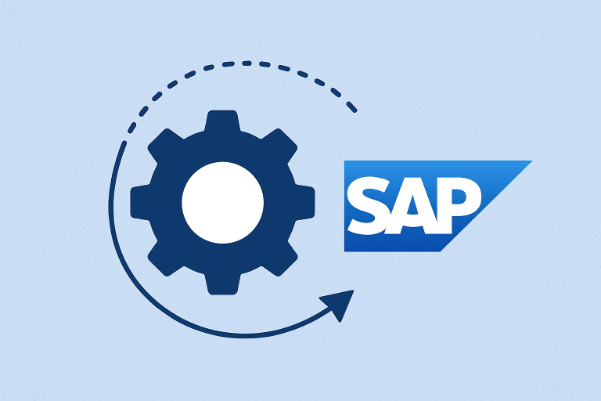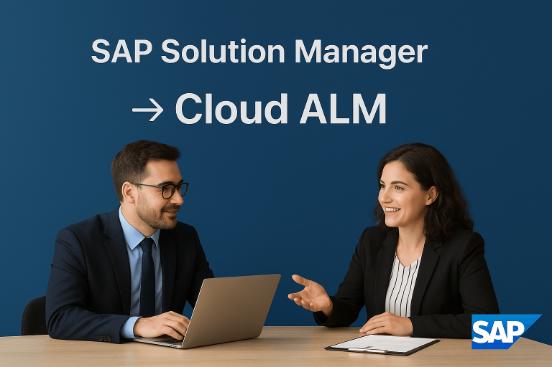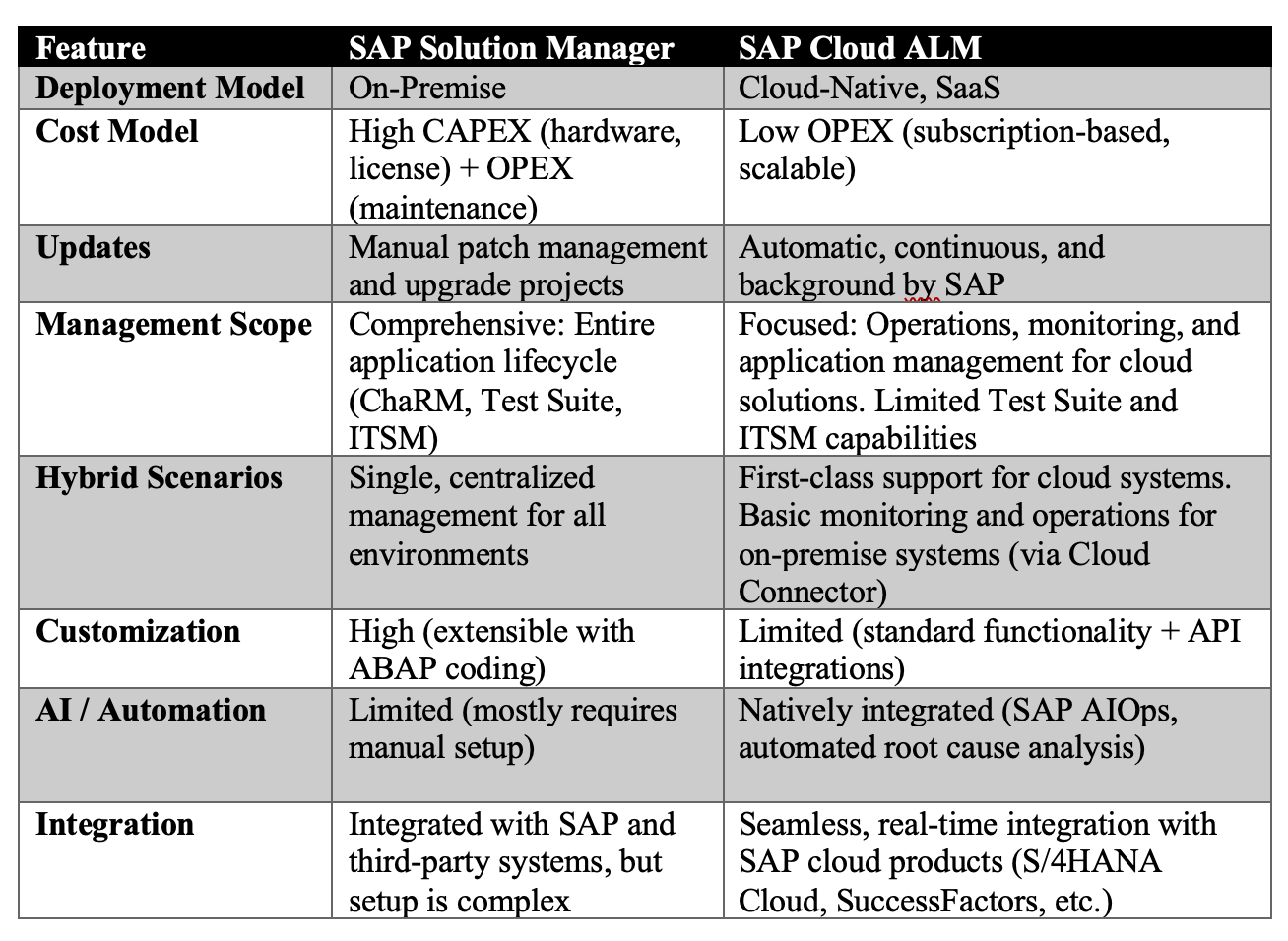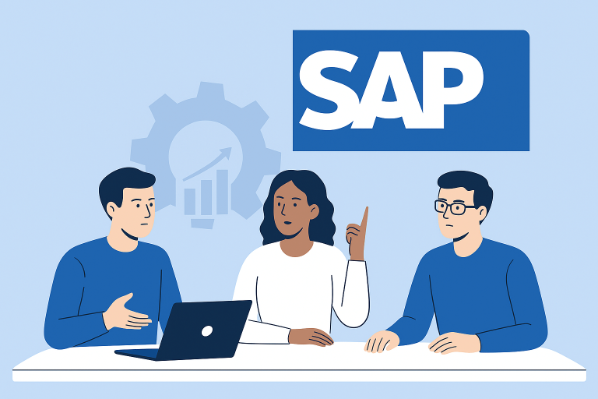SAP has long been a global giant in enterprise software, shaping industry standards and serving as the digital backbone for businesses worldwide. At the heart of this ecosystem lies SAP Solution Manager (SolMan), a mission-critical platform for Application Lifecycle Management (ALM). However, SAP’s strategic decisions for 2027 and its growing investments in next-generation cloud solutions signal a profound transformation for SAP Solution Manager users—and especially for SAP Basis teams.
SAP has announced that mainstream maintenance for SAP Solution Manager will end in 2027. While customers may opt for extended maintenance until 2030, SAP’s official roadmap now prioritizes Cloud ALM as the future platform. The company strongly recommends that customers adopt Cloud ALM, aligning its innovation and investment strategy with this new approach. This shift places Cloud ALM at the center of strategic planning for IT organizations managing SAP landscapes.
In recent years, one of the most discussed topics in the SAP ecosystem has been the transition from Solution Manager to Cloud ALM. This move is not just a technical decision—it reflects SAP’s vision of embedding cloud computing and artificial intelligence into the very core of business operations. But what does this really mean? Why is SAP moving in this direction? And more importantly, what opportunities and challenges does this transformation present for Basis teams, IT leaders, and business executives alike?

SAP’s Cloud Journey: From On-Premise to RISE with SAP
To understand SAP’s current cloud-first strategy, it is essential to look back at its evolution. For decades, SAP’s business model centered on on-premise systems, deployed within a company’s own data centers. Within this model, SAP Solution Manager (SolMan) became one of the most essential platforms for SAP customers, serving since the early 2000s as the cornerstone of Application Lifecycle Management (ALM). By 2007, its core releases had matured, establishing SolMan as a central hub for both operational tasks (system administration, maintenance, troubleshooting) and project management. However, with the rise of cloud computing in the early 2010s, SAP began reshaping its long-term strategy.
Key milestones in this journey include:
- The Birth of S/4HANA (2015): With its revolutionary in-memory database technology, S/4HANA redefined performance standards. It introduced a hybrid model, running both on-premise and in the cloud.
- SAP Cloud Platform (now SAP BTP): SAP expanded its cloud capabilities by offering a Platform-as-a-Service (PaaS), enabling customers to build, integrate, and extend applications in the cloud.
- RISE with SAP (2021): Marking the peak of SAP’s transformation, RISE with SAP introduced “Business Transformation as a Service.” This comprehensive offering facilitates migration to S/4HANA Cloud while bundling infrastructure management (IaaS), application management (SaaS), and the transformation journey itself—fully replacing the on-premise model with a cloud-native approach.
In parallel, SAP developed Cloud ALM as the successor to Solution Manager, announcing that it would be embedded within the RISE with SAP offering. This shift made it clear that Solution Manager no longer aligned with SAP’s modern cloud vision. Looking ahead, SAP’s roadmap shows a gradual phase-out of investments in Solution Manager after 2027, with full focus placed on cloud-based management platforms. This is not merely an “end of support,” but a strategic realignment.
Why Did SAP Take This Step?
SAP’s decision is driven by market dynamics and the innovation speed enabled by cloud technologies. By adopting a cloud-first approach, companies can reduce operational costs while unlocking seamless integration with next-generation solutions like S/4HANA. SAP’s ultimate goal is to prepare its customers for the digital transformation demanded by today’s business environment.
SAP’s strategic objectives can be summarized under three pillars:
Cloud-Centricity: The launch of RISE with SAP highlighted the company’s commitment to moving businesses to the cloud. Cloud ALM is a natural part of this journey.
Agility & User Experience: While Solution Manager provided extensive functionality, it became increasingly complex. Cloud ALM, with its lean, modern, cloud-native design, ensures simpler access and usability.
AI & Automation: SAP envisions a future where workloads are managed faster and more efficiently with AI-powered automation. Cloud ALM provides the foundation to realize this vision.
Although SAP will continue limited support for Solution Manager in the short term, its long-term direction is clear: the future lies with Cloud ALM. Through the RISE with SAP strategy, investments in AI, and next-generation management tools, SAP is firmly guiding customers toward a cloud-driven, intelligent enterprise landscape.

Further Reading
The silent revolution of artificial intelligence in SAP Basis services has already begun. Join us as we look behind the scenes of this transformation and explore the latest AI applications and groundbreaking trends shaping SAP Basis management.

Pros and Cons of SAP Cloud ALM: A Technical Perspective
SAP Cloud ALM was designed as a lean, cloud-native, and integrated ALM solution for the digital era. However, it does not yet fully replicate the broad range of features offered by Solution Manager.
Advantages of SAP Cloud ALM
Cloud-Native by Design: Built from the ground up for the cloud, SAP Cloud ALM supports rapid updates, continuous integration, and seamless deployment (CI/CD).
Simplified Operations: Automation and AI-powered insights reduce routine operational tasks. For example, patch management and upgrades can be executed automatically in the background.
Lower Total Cost of Ownership (TCO): Hardware, licensing, and maintenance costs are eliminated. With a subscription-based model, costs become more predictable and scalable.
Integration-First Approach: Offers smooth, out-of-the-box integration with SAP’s entire cloud portfolio (S/4HANA Cloud, SuccessFactors, Ariba), providing end-to-end visibility across business processes.
Current Limitations of SAP Cloud ALM
Scope Limitations: SAP Cloud ALM does not yet match the full functionality of Solution Manager. Advanced capabilities such as complex business process modeling, custom code analysis, and detailed test automation are still maturing.
Challenges in Hybrid Landscapes: While strong in managing cloud systems, SAP Cloud ALM may not provide the same centralized experience as Solution Manager for hybrid environments combining on-premise and cloud. This often results in companies needing to manage two platforms during the transition.
Lack of Customization: Designed as a standardized and streamlined solution, SAP Cloud ALM lacks the extensive customization and extensibility options available in Solution Manager.
Although SAP is rapidly enhancing Cloud ALM, replicating the maturity and stability of Solution Manager, which has been in use for over 15 years, is not an overnight process. As a result, some organizations fill functional gaps with third-party tools. For many, a hybrid approach remains the most realistic short-term strategy.
In this context, companies should also consider SAP Focused Run—an alternative solution designed for large and complex SAP landscapes. Focused Run delivers some of Solution Manager’s critical capabilities in a cloud-optimized setup, making it an important option during the transition to SAP Cloud ALM.
SAP Solution Manager vs. Cloud ALM: Technical Comparison

Risks and Challenges of the Transition
While this major shift brings undeniable strategic advantages, it also introduces significant risks and challenges that organizations must carefully address:
Impact on Existing Investments: For companies that have invested heavily in Solution Manager and on-premise infrastructures over the years, the move to Cloud ALM may feel like abandoning a substantial investment.
Human Resource Challenges: Perhaps the most pressing challenge. Traditional SAP Basis teams are highly skilled in tasks such as system installation, patch management, and performance optimization. With the transition to the cloud, many of these responsibilities will either disappear or become automated. Teams will need to develop new competencies in cloud architectures (AWS, Azure), Infrastructure as Code (IaC), and automation tools.
Operational Risks: Migration to a new platform comes with risks such as integration issues, data migration complexities, and potential process disruptions. Without proper planning and execution, business continuity may be negatively impacted.
Security and Compliance Concerns: Ensuring data security in the cloud requires a different approach compared to on-premise environments. Organizations must carefully evaluate cloud security protocols and compliance requirements (e.g., GDPR) to avoid regulatory or reputational risks.

Is This the End of the Road for SAP Basis Teams?
For SAP Basis professionals, this is not the end of a career—it’s the beginning of a new chapter. The shift from SAP Solution Manager to Cloud ALM is more than just a technical upgrade; it represents a fundamental transformation of roles. Basis experts must evolve from being “system administrators” to becoming “cloud architects” or “automation engineers.”
SAP Cloud ALM also opens the door to new opportunities, offering Basis teams the chance to acquire modern skills and take on more strategic responsibilities.
- Adapting to New Tools: Cloud ALM’s interface and operations differ significantly from Solution Manager. Basis professionals need to upskill to master these new capabilities.
- Monitoring and Analysis Differences: Some of the deep-dive functionalities available in SolMan are not yet fully matured in Cloud ALM. As a result, organizations often operate in a hybrid model, where certain processes must still be managed through SolMan.
- Strategic Role Evolution: Basis teams are no longer just responsible for keeping systems running. They must now ensure seamless cloud integration and drive automation that accelerates business transformation.
In short, the future of Basis professionals is not about “managing systems,” but about becoming key enablers of digital transformation. The right question is not “Is this the end of the Basis role?” but rather “Which new role will you take on?”
Critical Transformation for Basis Teams: New Skills Required
Traditionally, SAP Basis teams were responsible for tasks such as system installation on the SAP NetWeaver layer, patch management (SPAM/SAINT), performance tuning (ST04, ST06, ST02), and database administration (BRTOOLS). With RISE with SAP and SAP Cloud ALM, many of these tasks are now automated.
To stay relevant, Basis experts must acquire the following new competencies:
Cloud Platforms (IaaS/PaaS): Expertise in leading providers like AWS, Azure, and GCP, including their infrastructure and operational models.
Infrastructure as Code (IaC): Proficiency in tools such as Terraform and Ansible to automate infrastructure provisioning and management.
API Management: Understanding REST APIs and OData services for seamless integration across cloud-based systems.
AI and Machine Learning: Leveraging SAP’s AI-driven operational intelligence (AIOps) solutions to enable proactive monitoring and automated problem resolution.
Cybersecurity: Strengthening knowledge of cloud security protocols and risk management to address increasing threats in cloud environments.
Knowledge of SAP Focused Run: For large-scale and hybrid landscapes, SAP Focused Run offers a cloud-hosted alternative that mirrors many of SolMan’s capabilities. Basis teams should also consider this platform when planning their transformation.

Strategic Implications for IT Managers and Business Leaders
IT managers must become the architects of this transition. Their role is shifting from merely managing technical infrastructure to defining the right migration strategy, preparing the workforce for this transformation, and conducting a thorough return on investment (ROI) analysis. They must select the right cloud architecture for their company, manage the budget, and build a roadmap that minimizes risks.
This migration process concerns not only IT managers but also C-level business leaders. For business leaders, this is not a mere technology investment—it’s a critical business strategy. They need to understand the profound impact this transition will have on costs, efficiency, innovation, and market competitiveness.
Key Considerations for Leadership
During this transformation, here are the core areas IT managers and business leaders must focus on:
- The Need for a Strategic Plan: Companies must define their transition strategies from SAP Solution Manager to Cloud ALM within the next 3-5 years.
- Upskilling and Reskilling: Leaders must create a skills inventory for their current Basis teams and plan comprehensive training and reskilling programs. Selecting the new technology infrastructure and managing the transition project will be their most critical tasks. If external support is needed, it’s vital to assess your business partners’ proficiency in the Cloud ALM transformation.
- The Cost Dimension: Since Cloud ALM is a cloud-based solution, its licensing, maintenance, and operational costs will be structured differently. Leaders must understand and budget for this new model.
- Risk Management: Without a clear transition plan, organizations risk facing support and integration issues in the future.
Conclusion: Preparation Starts Today
The shift from SAP Solution Manager to Cloud ALM is not a change that will happen overnight. While companies still have time, they must use it wisely and strategically.
- Basis teams need to acquire new skill sets.
- IT managers must clarify hybrid usage scenarios.
Business leaders must account for cost, process, and integration dimensions.
Immediate Actions You Can Take:
- Review SAP’s official “Transition to SAP Cloud ALM” roadmap.
- Analyze your current SolMan landscape. What functions are you actively using (Change Request Management – ChaRM, Test Suite, End-to-End Monitoring, etc.)? Research their equivalents and maturity levels in Cloud ALM.
- Launch a pilot project: You can experience Cloud ALM for free right now. Start a small pilot project (e.g., monitoring a development system) to help your team get accustomed to the platform. It’s the best way to manage the learning curve.
- Speak with Your Partners: If you work with an external consulting firm, question their expertise and experience in this transformation. Experienced partners in Cloud ALM and RISE with SAP projects will significantly ease your transition process.
Is time running out? Maybe not immediately. But SAP’s vision is clear: the future is in the cloud, centered around Cloud ALM.
Every preparation made today will guarantee business continuity and a competitive edge for tomorrow. Is your company ready for this transformation? Have you started to build your skill sets and roadmap?

